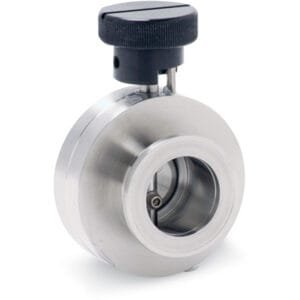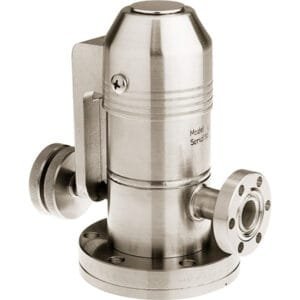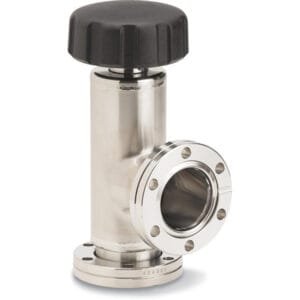Conflat (CF) UHV 6-Way Standard Crosses
Conflat (CF) UHV 6-Way Standard Crosses from TFM are precision-engineered components designed for ultra-high vacuum (UHV) applications. These crosses feature six ports, providing flexibility and efficiency in creating complex vacuum systems. Made with the robust ConFlat (CF) flange design, they ensure a leak-tight seal even under the most demanding conditions. With their high-performance sealing capabilities, these standard crosses are ideal for research, semiconductor processes, and material science applications that require ultra-high vacuum environments.
Key Features
Six-Port Configuration for Versatility
The 6-way configuration of these crosses allows for multiple connections to be made in a single unit, providing flexibility in the design of UHV systems. This design is particularly useful in applications requiring multiple inputs and outputs within a compact space.ConFlat (CF) Flange Compatibility
The CF flanges ensure a metal-to-metal seal, providing superior vacuum integrity and preventing any potential leaks, which is essential for the stability and reliability of UHV systems.High-Performance Sealing
Designed for ultra-high vacuum systems, the Conflat (CF) UHV 6-Way Standard Crosses maintain exceptional sealing performance, even in the vacuum range of 10⁻¹¹ Torr, ensuring a secure and leak-free environment.Durable Construction
These crosses are built with high-quality materials, typically stainless steel, to ensure durability and resistance to corrosion. This provides long-lasting reliability, even in the most demanding UHV environments.Precision Manufacturing
Manufactured to meet stringent tolerances, these crosses provide precise dimensions and fit, ensuring compatibility with other vacuum system components.
Applications
Research and Scientific Applications
Ideal for use in vacuum chambers, surface analysis, and particle accelerators, these crosses support complex UHV setups that are commonly required in scientific experiments.Semiconductor Processing
Widely used in semiconductor manufacturing processes, these crosses ensure the required vacuum integrity for critical operations such as thin-film deposition, etching, and ion implantation.Material Science and Nanotechnology
Used extensively in material science research, these crosses provide the necessary vacuum conditions for studying materials at the atomic or molecular level.Vacuum Systems for Analytical Instruments
Ideal for use with surface science equipment, spectrometers, and other analytical instruments that require ultra-high vacuum conditions for accurate measurements.
Technical Specifications
Material Options: Stainless steel, Inconel, or other suitable materials
Flange Type: ConFlat (CF)
Vacuum Rating: Ultra-high vacuum capabilities down to 10⁻¹¹ Torr
Port Configuration: 6-way standard cross
Temperature Range: Designed to operate across a broad temperature range
Sizes and Custom Options: Available in various sizes with custom configurations available on request
Benefits of Conflat (CF) UHV 6-Way Standard Crosses
Leak-Tight Seal: The ConFlat flange design ensures a robust metal-to-metal seal, providing the highest level of leak-tightness in ultra-high vacuum systems.
Flexible Connectivity: With six ports, these crosses allow for multiple components to be connected in a single unit, simplifying the design of complex UHV systems.
Durable and Reliable: Made from high-quality, corrosion-resistant materials, these crosses are built to withstand the harsh conditions of UHV environments.
Precision Fit: Manufactured with high precision, these crosses ensure perfect compatibility and reliability when integrated with other vacuum system components.
Why Choose TFM?
TFM’s Conflat (CF) UHV 6-Way Standard Crosses are trusted in a wide range of UHV applications due to their exceptional sealing performance, durability, and flexibility. Whether for scientific research, semiconductor processing, or advanced material studies, these crosses provide a versatile solution for complex vacuum system configurations. With TFM’s dedication to precision and quality, you can count on reliable, leak-tight performance in even the most demanding UHV conditions.





Reviews
There are no reviews yet.